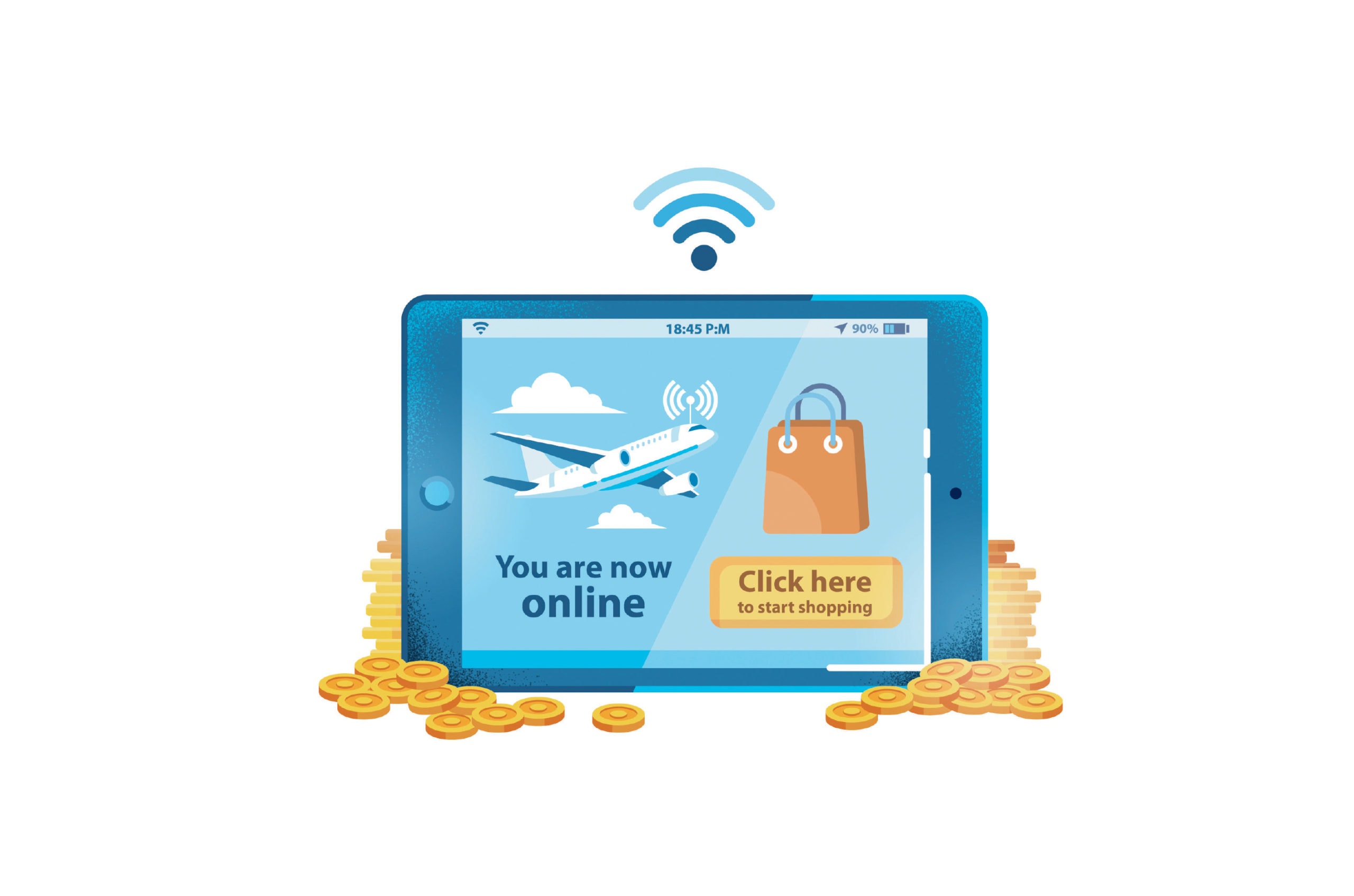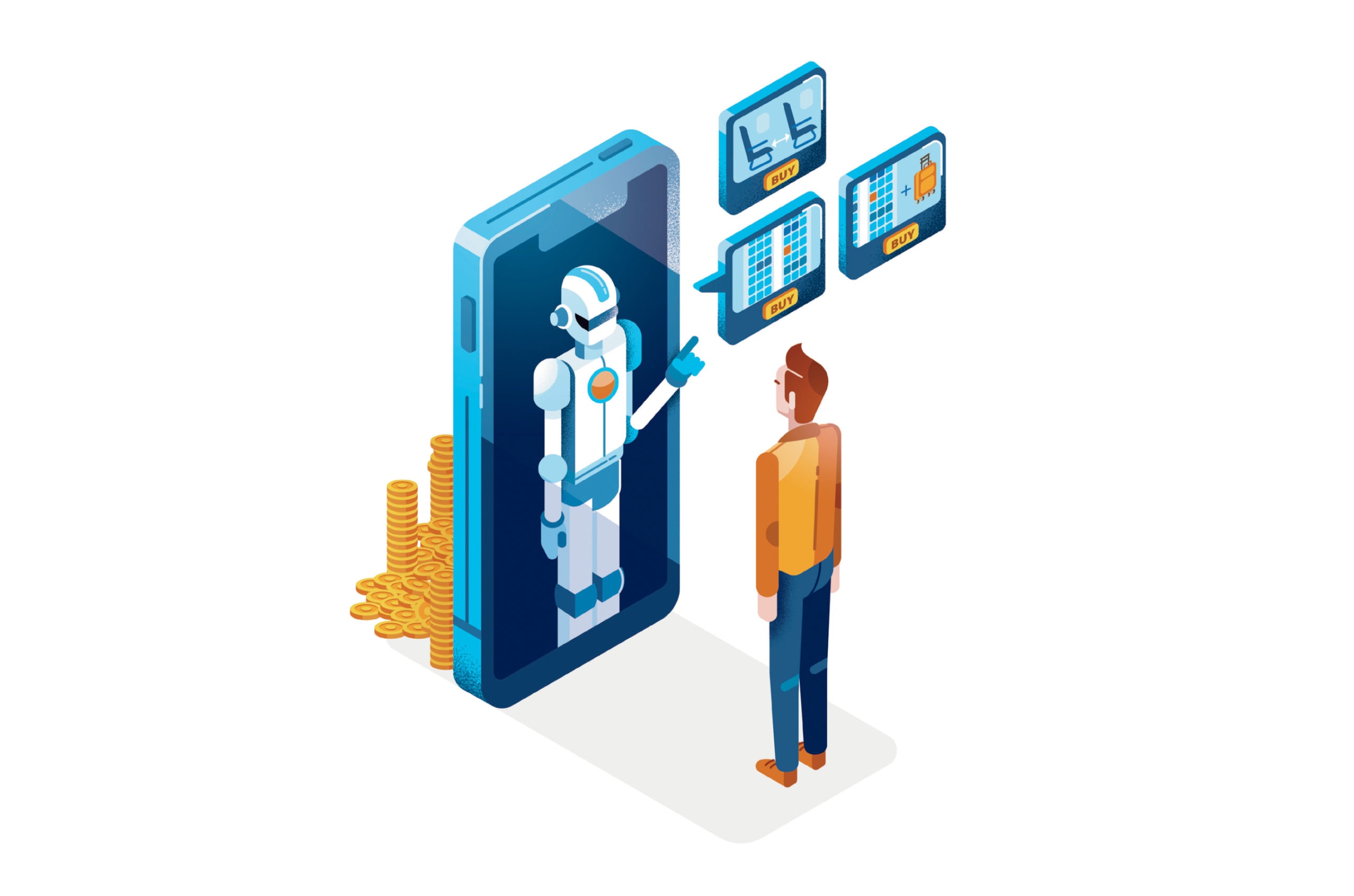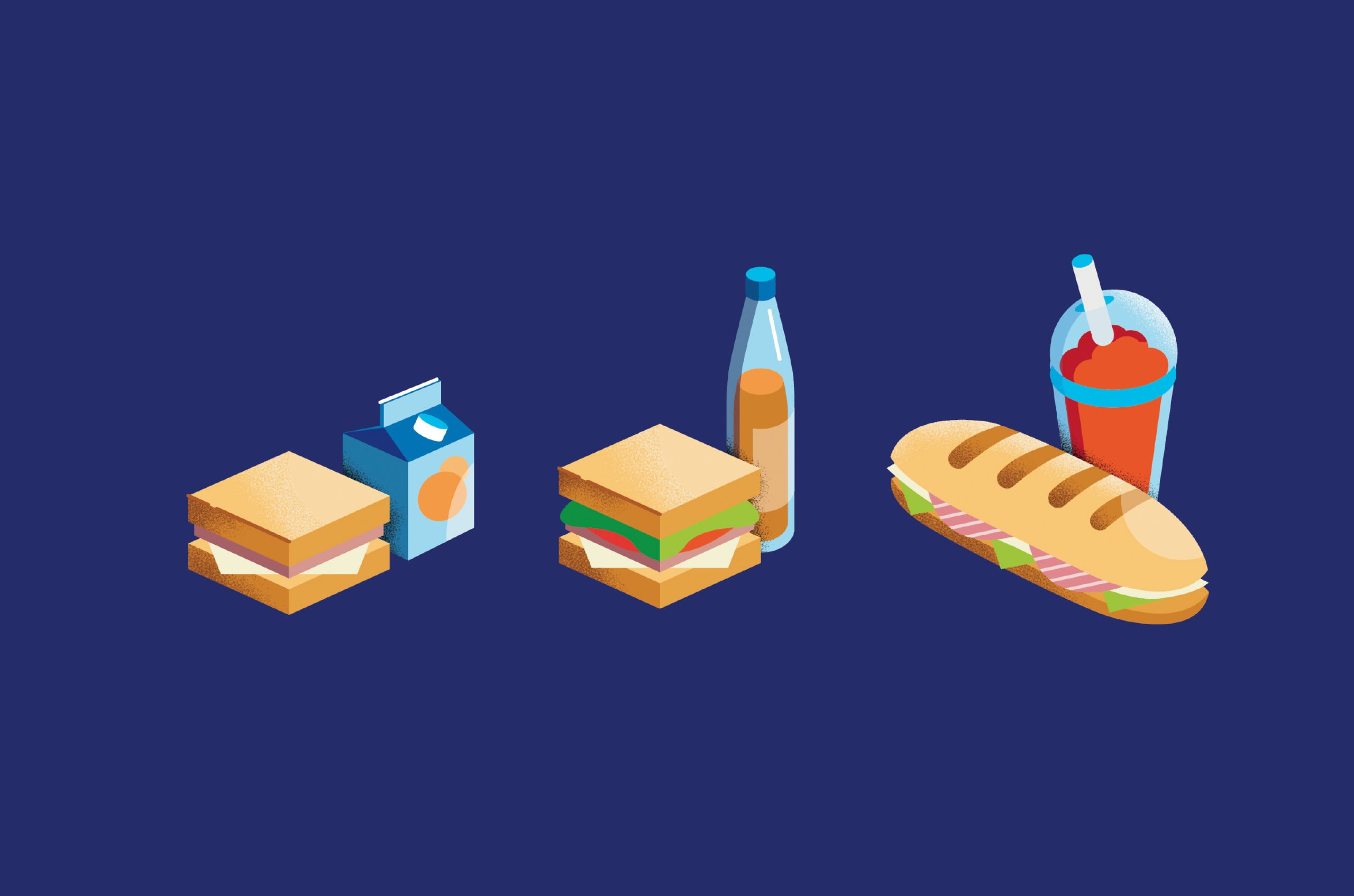Onboard broadband opens airlines up to a brave new digital world that’s already been conquered by e-commerce giants. To stay competitive, airlines may find that empathy is the best retail strategy.
Let’s start with the Alibaba in the room. Airline executives would be wise to remember the story behind the name of China’s – and by many measures, the world’s – largest online retailer. Ali Baba, as Arabic folklore tells us, was a poor woodcutter who one day overheard the magical passphrase to a den filled with treasure stolen by 40 thieves. A few repeats of “open sesame” later, all of the thieves end up dead and the treasure in Ali Baba’s possession.
Unbundled, Ã la carte ancillary revenues earned airlines an estimated $92.9-billion fortune last year. The industry’s worst critics call it nickel-and-diming, but the strategic unpackaging of fares and upselling of optional extras – a tactic that saved many airlines from insolvency during the 2008 financial crisis, hardly amounts to thievery. Experts predict that by 2035, onboard broadband will add $130 billion in ancillary opportunities, but it will also open the door to treasure-seeking e-commerce behemoths.
“Putting a restricted catalog of duty-free offers online doesn’t make any sense in front of a consumer three clicks away from Amazon or Alibaba.” – Julien Sivan, SKYdeals
“Once connected, passengers switch from a closed, airline-exclusive environment to a competitive digital world,” says Julien Sivan, chief executive officer of SKYdeals, an in-flight retail company that works with Air France and La Compagnie. “Putting a restricted catalog of duty-free offers online doesn’t make any sense in front of a consumer three clicks away from Amazon or Alibaba. We must go further.”

All Rights Reserved
Good retailers know they have to get a lot of things right to be successful. For airlines in the digital world, this involves multichannel integration, streamlined analytics and rich content. Last October, Scandinavian Airlines (SAS) partnered with Datalex, an omnichannel airline retail solution provider, to overhaul its digital strategy. As Kati Andersson, vice-president of Digital Sales and Distribution for SAS, put it, this approach allows the airline “to make the right offer to the right customer at the right time, via the right channel, on the right platform.”
Of all the rights that could go wrong, timing may matter most. To time offers effectively, retailers require an acute understanding of consumer needs. “Everybody thinks that our industry is about capital technology, processes, systems and data, when actually it’s about people and emotions,” explains Oliver Ranson, an airline monetization expert. For instance, offering a meal special during booking, when “people are as price sensitive as they could possibly be,” he says, may not be the best strategy.
A meal special will appeal to travelers when they’re hungry. Mobile apps can help cater to such cravings, although just having an app is not always enough, says Paul Odnoletkov, senior director of Marketing at Guestlogix. “There is a global ecosystem of travel suppliers just waiting to deliver the right ancillary merchandise to the right customers,” he explains on the company blog. “Airlines should focus on creating a superior digital experience in the mobile channel, where they can manage these fulfillment opportunities.”

More Human Machines
Creating a superior digital experience is often easier said than done. Consumer behavior research shows that trust is an essential factor in online purchases, but it can be hard to earn trust in impersonal digital environments.
A recent study published in the journal Computers in Human Behavior finds that online consumers tend to rely on intuition rather than deliberation when making online purchases. Counterintuitively, as the risk of the purchase decision increases, people are more apt to base their decision on intuitive cues such as fonts, images and colors. Deliberative assurances, such as return guarantees or privacy policies, fall by the wayside.
One way to humanize the web experience is with chatbots. For many, chatbots are personable enough to relate to, and machine-powered enough to depend upon. In fact, a 2016 report by Mindshare found that over half the people trusted chatbots with sensitive information more than they did humans. Several carriers, including Singapore Airlines, Air New Zealand, Swiss International, Lufthansa and Alaska Airlines, have dispatched friendly and multilingual bots to help customers with purchases. In February, AirAsia became one of the latest airlines to join the list, introducing its 3.3 million monthly active app users to AVA, AirAsia’s Virtual Allstar.
Mindshare’s artificial intelligence study notes that nearly one in every two respondents think it’s creepy when bots pretend to be human. But some AI experts disagree. “We see little nuances in the conversation when there’s an avatar with an image,” says Cleat Grumbly, senior vice-president of Next IT, the company behind Alaska Airlines’ bot, Jenn. “It feels a little more personal, and people will start to build a little more of a relationship with a virtual agent.” And, Grumbly notes, people who chat with bots tend to spend more money.

Basic, Better, Best
Branded fares remain one of airlines’ best sources of ancillary revenue. They are, of course, the big-ticket item in airline retail catalogs. Another reason for the success of branded fares has to do with the number three.
“One of the interesting things that we now know is what I like to call the Law of Three,” Ranson says. As he explains, if a traveler is offered the choice between a seat only and a seat plus a few frills, people will almost always choose the cheapest option. A choice of four or more options makes the selection too complicated, and customers may go elsewhere. Three options is the sweet spot. “The human brain is a funny thing,” he explains. “It will always go for the cheapest option, unless you put that option into perspective.”
“A choice of four or more options makes the selection too complicated. Three options is the sweet spot.” – Oliver Ranson, Airline Monetization Expert
Good, better and best pricing can be found everywhere from the three pumps at the gas station to the bundled cable packages. The “Goldilocks effect” is one reason this tactic works, but another is the anchoring effect of the most expensive option. “Although it’s more expensive than what the passenger’s willing to pay, it makes the intermediate product look like much better value for money,” Ranson says. It’s why when Williams- Sonoma introduced a $429 breadmaker in the 1990s, sales of its $279 middle-range model almost doubled.
As early as 2012, the big three airlines in the United States – American Airlines, Delta Air Lines and United Airlines – began testing bare-bones basic economy fares. But it’s not clear how many of these fares the airlines actually intended to sell. “The success of that product isn’t how many people buy it, but how many people don’t buy it and choose another product,” said Delta president Glen Hauenstein on a 2017 earnings call. The airline reported that roughly half its customers chose to pay more after looking at basic economy restrictions, as did American Airlines customers. United Airlines said 60-70 percent of customers leveled up from basic.
However, positioning the anchor too high – such as the $1,000 Golden Opulence Sundae at Serendipity 3 in New York – can be dangerous, especially if your core customers tend to want the best. For instance, Apple’s latest product launch, which saw price hikes upward of 20 percent, may have outpriced their best customers. According to price consultant Rafi Mohammed, a company’s highest price should not exceed the middle offer by more than 50 percent.
The right premium offering can raise profits and lift the overall brand. Take Etihad’s Residence as an example. While it may not be affordable for most flyers, the white-glove image will have undoubtedly made an impression.
Emotional Shoppers
According to Ranson, “The airlines that will be the most successful in the next decade will be the ones that can truly empathize with their passengers.” There are many ways to experiment with ancillaries, whether that’s Etihad finding a 23 percent lift in fares with eBay-style auction seating, or Allegiant Air increasing shopping cart yields by 300 percent by offering an installment payment option. But those that start with empathy will be the disruptors, Ranson says.
If airlines start with understanding consumer needs, they’re more likely to make consumers happy. In fact, Kajal Narasimha, managing director of Merchandising and Personalization for United Airlines, told an audience at Skift Global Forum in January that United customers who buy ancillary products have higher satisfaction than those who don’t. And if airlines are able to harness happiness among their customers, they’ll likely be able to say “open sesame” to loyalty, too.
“Finding Treasure” was originally published in the 9.3 June/July issue of APEX Experience magazine.


